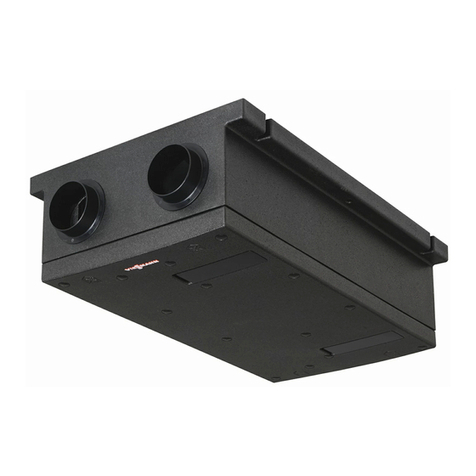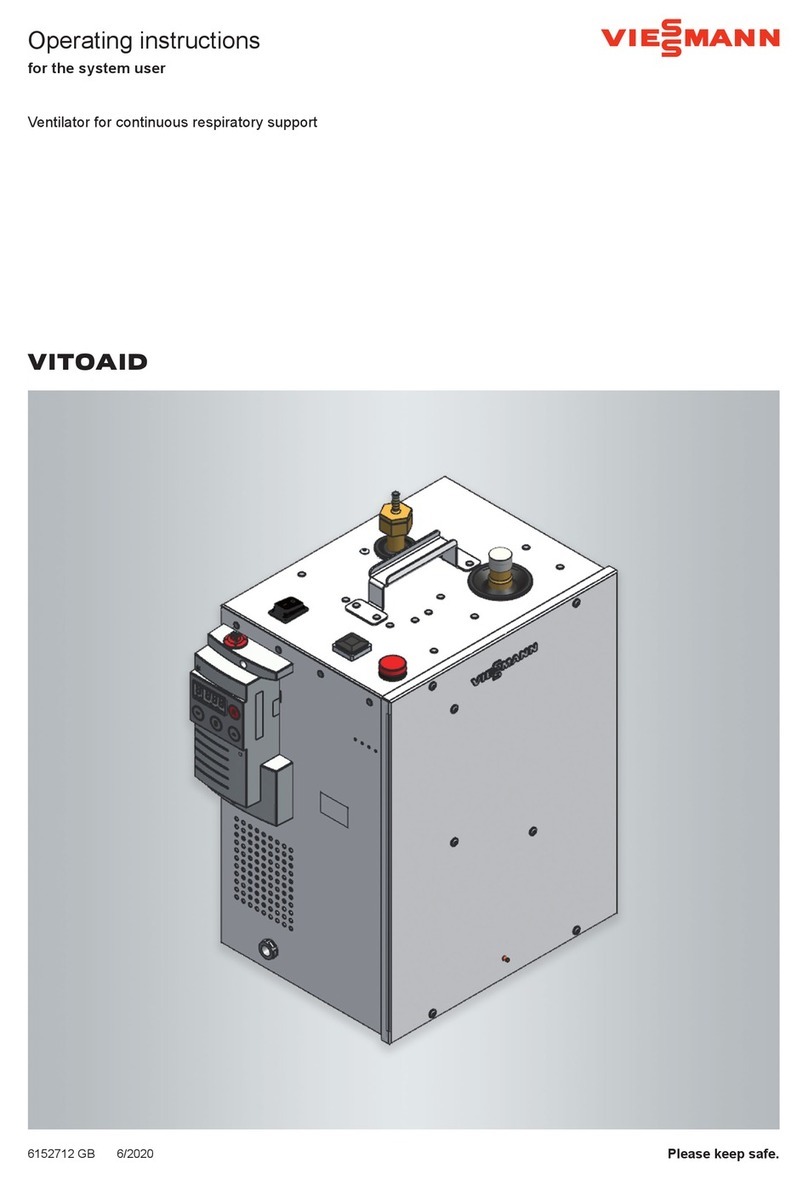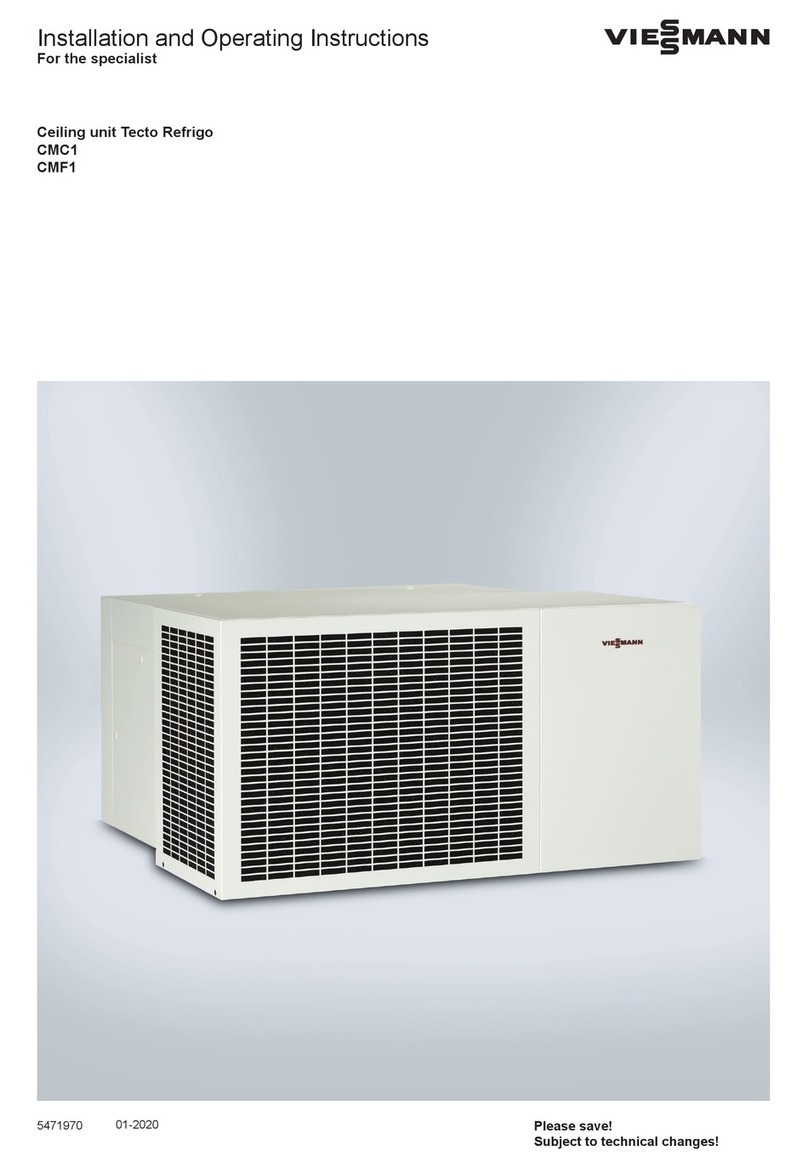
8
Installation requirements
■Preferably site the ventilation unit inside the airtight
and thermally insulated building envelope.
!Please note
The installation room must be dry and free
from the risk of frost.
Ensure ambient temperatures between 2 and
35 °C.
■The ventilation unit can be installed on the ceiling or
wall mounted.
■Keep ductwork to the extract air and, where appro-
priate, supply air areas short.
■Thermally insulated supply air and extract air pipes
that are routed through unheated areas of the build-
ing in accordance with DIN 1946-6 (not applicable to
EPP pipes or bends).
■A standard socket is required for the power supply.
■Connect the condensate drain to a waste water pipe.
■The ventilation unit must be accessible for mainte-
nance purposes.
Possible installation sites:
■Separate plant room, storage area or utility room on
the ground floor
■Cellar
■Thermally insulated long pane attic room
Open flue combustion equipment and Vitovent
Danger
The simultaneous operation of open flue com-
bustion equipment (e.g. an open fireplace) and
the Vitovent in a space with combustion air inter-
connection results in dangerous negative pres-
sure in the interior. Negative pressure can result
in flue gas re-entering the room.
In order to prevent health risks, observe the fol-
lowing:
■Never operate the Vitovent simultaneously with
open flue combustion equipment (e.g. open fire-
place).
■Only operate combustion equipment in room sealed
mode with a separate combustion air supply. We rec-
ommend combustion equipment that has general
building approval as room sealed combustion equip-
ment of the Deutsches Institut für Bautechnik (DIBt)
[Germany].
■Keep doors to boiler rooms that are not part of the
combustion air interconnection with the living space
airtight and shut.
Information regarding the operation of the Vitovent
in conjunction with open flue combustion equip-
ment
■On-site safety equipment must be installed that will
switch off the ventilation unit when there is negative
pressure inside the room.
■The relevant flue gas inspector must give his/her
approval [check local regulations].
■Frost protection for the countercurrent heat
exchanger is ensured by means of the integral pre-
heater coil. For operation with even lower outside
temperatures, provide an additional external electric
preheater coil (accessories) or a geothermal heat
exchanger (on site) in the outdoor air duct.
Extractor hoods, extracting tumble dryers and the
Vitovent
!Please note
The simultaneous operation of extractor hoods
or extracting tumble dryers and the ventilation
unit in interconnected rooms results in negative
pressure inside the room.
Never link extractor hoods or extracting tumble
dryers into the ventilation unit ductwork.
Set up kitchen extractor hoods as recirculating
extractors, which is more energy efficient.
Never connect existing extractor hoods to the extract
air duct of the mechanical ventilation system for the
following reasons:
■Hygiene, contamination:
grease deposits in the extract air system
■Noise from the supply air valves:
Extractor hoods operate with a substantially greater
air flow rate (> 300 m3/h) than the ventilation unit.
The generated negative pressure creates a "short
circuit" inside the system, as the amount of differen-
tial air must be made up by the ventilation ductwork.
Connect extractor hoods via a coaxial exhaust air sys-
tem to enable the differential air volume to be replen-
ished.
Provide an interlock for the extractor when using an
extractor hood in conjunction with open flue combus-
tion equipment: See chapter "Open flue combustion
equipment and Vitovent"
Preparing for installation
Siting
5816563
Installation










































